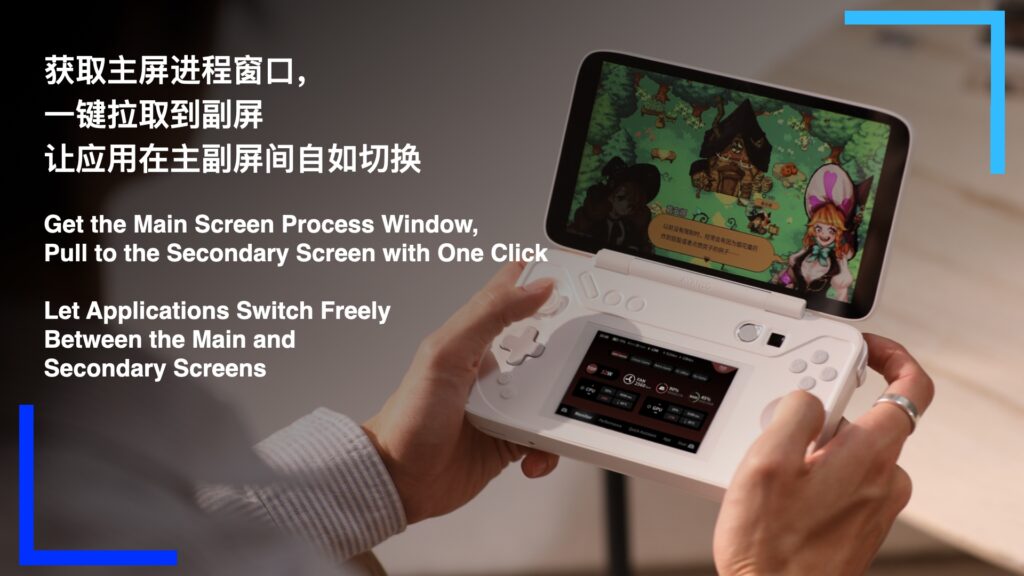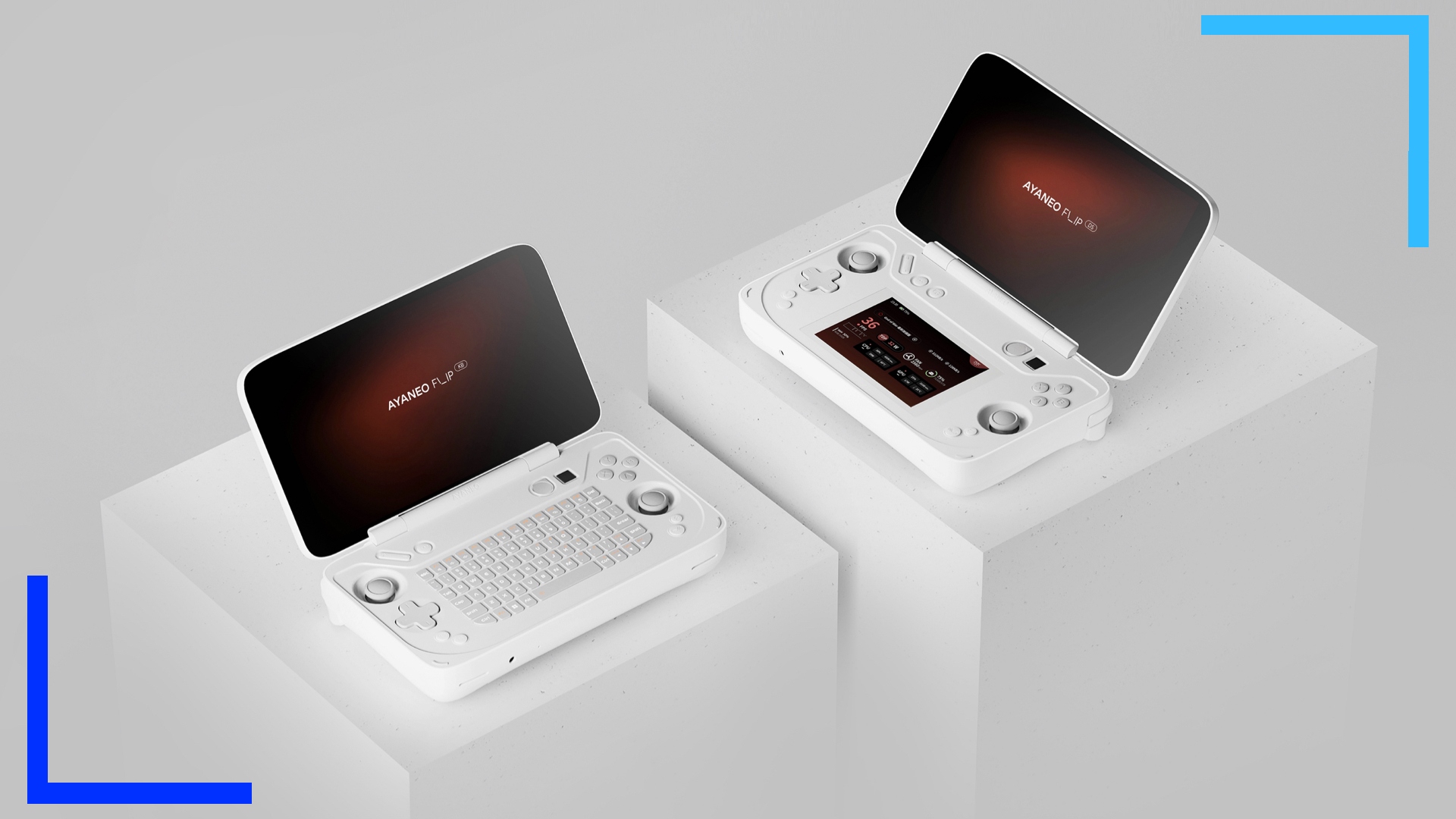AYANEO has launched a new take on the 3DS, the AYANEO Flip DS.
If your first thought is ‘Hey, that looks like a DS’, you’re right. The Flip DS wears its inspiration on its sleeve. That said, it’s clear this beast isn’t a quick cash-in. Along with the massive seven-inch screen up top, the lower half of the console includes not just a second screen, but also two Hall Effect sticks along with several buttons. If the DS styling isn’t your thing, AYANEO is also launching the Flip KB, which keeps the clamshell design but switches out the screen for a full keyboard.
For pricing info, check out the images below. The AYANEO Flip KB starts from $699 for the early bird offer, with prices going up to $1359 for the most high-end version of the device. For the Flip DS, the cheapest comes in at $739, while the most expensive will set you back $1359 as well.
A word of warning: Those early bird offers sell out really fast, so expect to be paying the IndieGoGo price as a minimum. If you’re interested in checking out the IndieGoGo page for the AYANEO Flip, you can find the respective pages for the Flip DS here and the Flip KB here .
Alternatively, if you’d like to see it in action or listen to this article, check out my video below.


AYANEO Flip DS Specs Explained.
If you guessed there would be several configurations available, congrats, you’re right.
Powering the Flip handhelds are the AMD Ryzen 7 7840U or the Ryzen 7 8840U. For the graphics, we’ve got RDNA 3. That means there’s a chance we could see AMD Fluid Motion Frames – AMD’s frame-generation software – come to the device either officially or via some sort of workaround.
I should note, the two chipsets aren’t going to offer wildly different performance in games. For tasks, the 8840U is the better choice, but if you’re only focused on gaming performance, the 7840U will do just fine.
For storage, you’ve got an M.2 2230 PCIe 4.0 SSD that comes in at either 512GB or 2TB. The internal SSD can be upgraded, but 2TB is the maximum the Flip DS can take. On the RAM side of things, the choices here are 16GB, 32GB, or a massive and frankly unneeded 64GB of LPDDR5X.
The screens are where things get interesting. The bottom screen is just 3.5 inches across with a max resolution of 960 x 640. That’s a ratio of 3:2 for those wondering. And yes, you can use the Windows extend screen function to the bottom screen.
For the top screen, AYANEO has implemented a full 1080p seven-inch IPS display that boasts an sRGB volume of 120 percent and a color gamut coverage of 100 percent. Nice!
| AYANEO Flip DS Specs | |
|---|---|
| CPU | AMD Ryzen 7 7840U / Ryzen 7 8840U |
| GPU | RDNA 3 |
| RAM | 16GB / 32GB / 64GB (LPDDR5X) |
| Storage (SSD) | 512GB or 2TB |
| Maximum TDP | 28w |
| Battery Capacity | 45Wh |
| Screen Brightness | 400 Nits |
Features.
Have you seen that little black square on the lower section yet? That’s an optical mouse pad. Just whack your thumb on it and you can move the mouse in Windows. That’s sure to save the headache of needing to set up a profile to control the mouse with a controller’s stick.
For cooling, AYANEO has gone with a new type of VC liquid cooling technology alongside a VC heatsink and heatsink fins. That’s as well as a PC-grade turbo fan to let the Flip DS hit a TDP of 28 watts. AYANEO is also prepping AYASpace 2.0 to work with the device. Some of the features of which, like selecting apps, you’ll be able to access via the bottom screen.
Performance potential.
Judging from the specs alone, the AYANEO Flip DS should be capable of performance similar to that of the Steam Deck and ASUS ROG Ally. For the latest AAA games, I’d expect to see the following results:
- Red Dead Redemption 2: 45 to 50 frames per second.
- Cyberpunk 2077: 30 to 45 frames per second.
- Starfield: 30 frames per second.
Obviously, if we can get AMD fluid motion frames running on the Flip DS those frames will be higher. But going from my previous performance reviews based on similar hardware, that’s the ballpark I’d be expecting to see.
Emulation Expectations.
Based on what I’ve learned from using other handhelds, the only real limits placed on the Flip DS should be the state of the emulators themselves. Xbox 360, for example, isn’t great on the Steam Deck, and no amount of boosts to the internal components is going to change that. And that’s not down to the hardware itself, just the fact that emulation is hard and getting perfect performance in the more recent retro systems is tricky.
With that in mind, I expect the Flip DS to be able to play up to Switch without too many problems. Performance will likely vary for Xbox, PS3, and Switch itself, but again, that’s the emulators more than the hardware. The most important thing here, though, is that the Flip DS should be able to breeze through systems like the DS and 3DS, and make use of that second screen through the emulators themselves.
Worth Buying?
We won’t know how good the AYANEO Flip DS is until it lands in mid-March. What I will say is there simply aren’t enough clamshell designs out there and there really should be. The design looks fantastic, the screen has all the right ingredients, and the thoughtful elements like an optical mouse mean this system could be the one to watch.
Will it make the list of best retro handhelds? Only time will tell. But if AYANEO can stick the landing, we could be looking at a powerful device that’s perfect for modern PC games and emulation on the go.
Gallery





